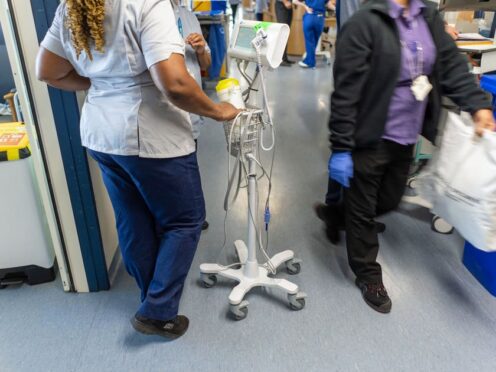
There is a “cover-up culture” in the NHS, with some hospitals concealing evidence when patient care goes wrong, the health ombudsman has warned.
Rob Behrens, the Parliamentary and Health Service Ombudsman, has described how he had to confront the altering and disappearance of crucial documents after patients had died.
Some parts of the NHS still put “reputation management” ahead of opening up to patients and their relatives when things go wrong, he said.
And he raised concerns about how whistleblowers in the service are treated.

Mr Behrens, who is standing down from the role after seven years, said that the NHS is “full of brilliant people” but life in the service is “very difficult” as it deals with “multiple crises”.
He described his role as “confronting the duality of an NHS resourced by brilliant people who kept it going through the Covid pandemic but, at the same time, having to confront a cover-up culture, including the altering of care plans and the disappearance of crucial documents after patients have died and robust denial in the face of documentary evidence”.
In an interview with the Guardian, Mr Behrens said the health service was a “very complex organisation, full of brilliant people, from porters to nurses, midwives, clinicians and managers, who have done brilliantly in handling multiple crises: Covid, huge staff shortages, financial pressures, demand, stress, the frailty of buildings, which makes life very difficult”.
He said: “Time and again I’ve come across stories of people who only want the truth about what happened to their loved one and they found it very difficult to get it.
“That’s my job – to get at the truth.”
On whistleblowers, he added: “I’ve had doctors on the phone to me telling me what has happened on too regular a basis over the seven years. They say that they’ve tried to make a complaint, to raise issues about patient safety, and they’ve been warned off. And they have said to me: ‘If I continue with this, my career will be over.’ Good clinicians have lost their careers as a result of the way that happens.”
A spokesperson for NHS England said: “It is absolutely vital that everyone working in the NHS feels they can speak up and that their concerns are acted on, and every local healthcare system is expected to adopt an updated national Freedom To Speak Up policy.
“The NHS has updated its Freedom to Speak Up Guidance, brought in extra background checks for board members to prevent directors involved in serious mismanagement from joining another NHS organisation, and when NHS staff raise concerns, action can be taken and overseen by a non-executive who can use their independent role to hold the organisation to account.
“As the ombudsman is aware, there have been major efforts to prioritise patient safety in England and progress in creating a more positive safety culture amongst the workforce, which has led to higher levels of patient safety incident reporting than ever before and a widespread focus on improvement, including through the new Patient Safety Incident Response Framework.
“While significant harm from patient safety incidents is thankfully rare, reporting incidents allows us to review and understand how they have happened so we can take effective steps to improve, ultimately making services safer for patients.”

Enjoy the convenience of having The Sunday Post delivered as a digital ePaper straight to your smartphone, tablet or computer.
Subscribe for only £5.49 a month and enjoy all the benefits of the printed paper as a digital replica.
Subscribe